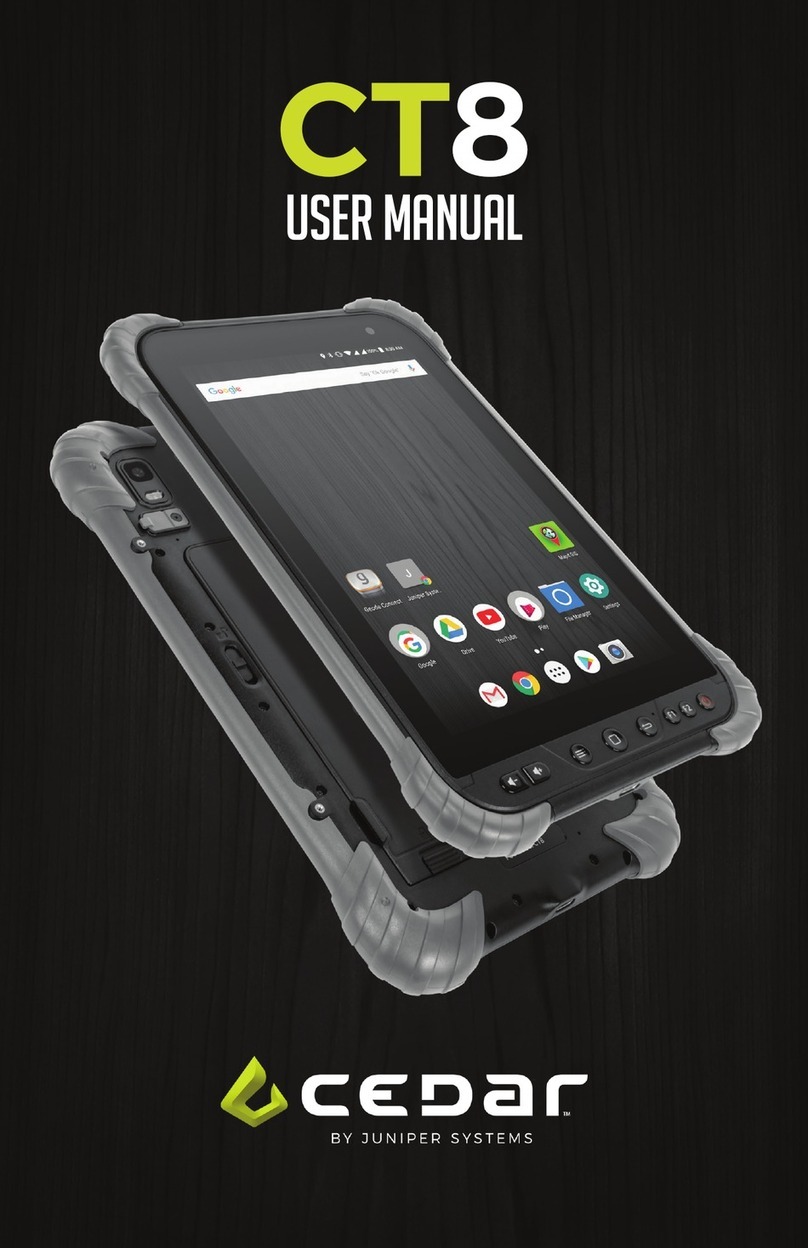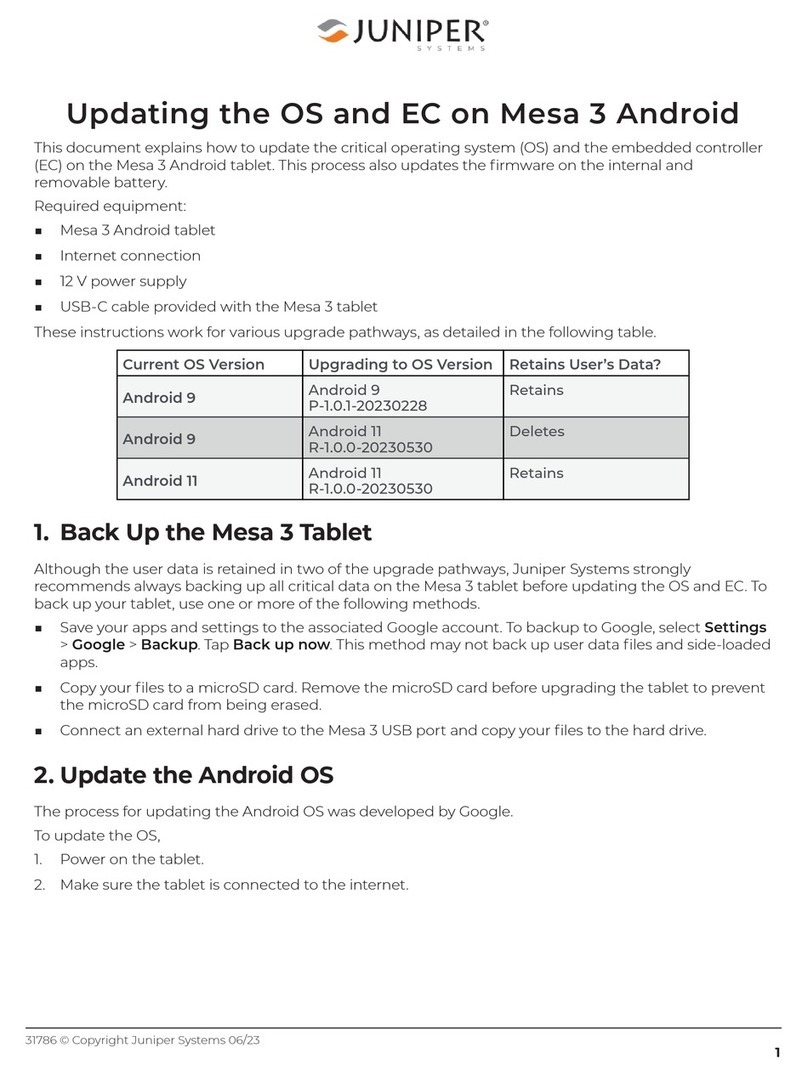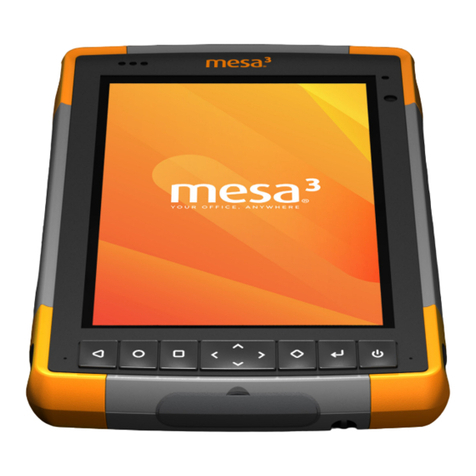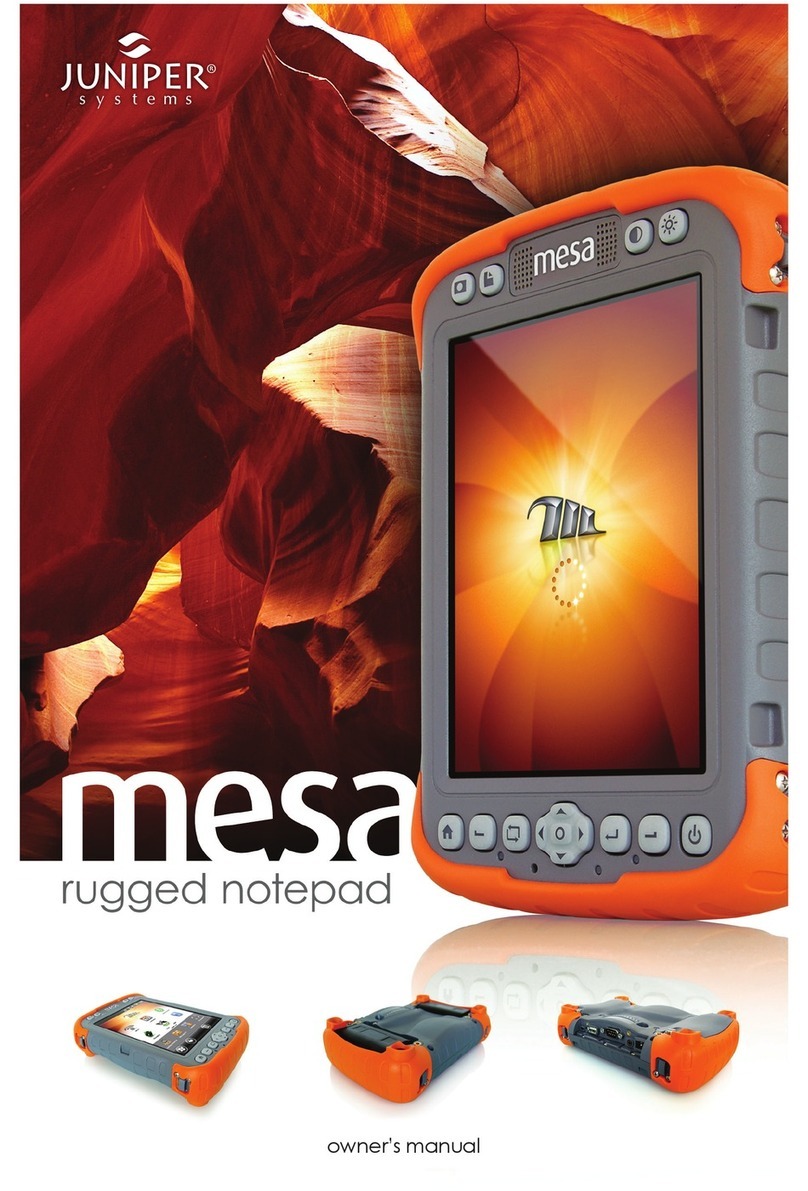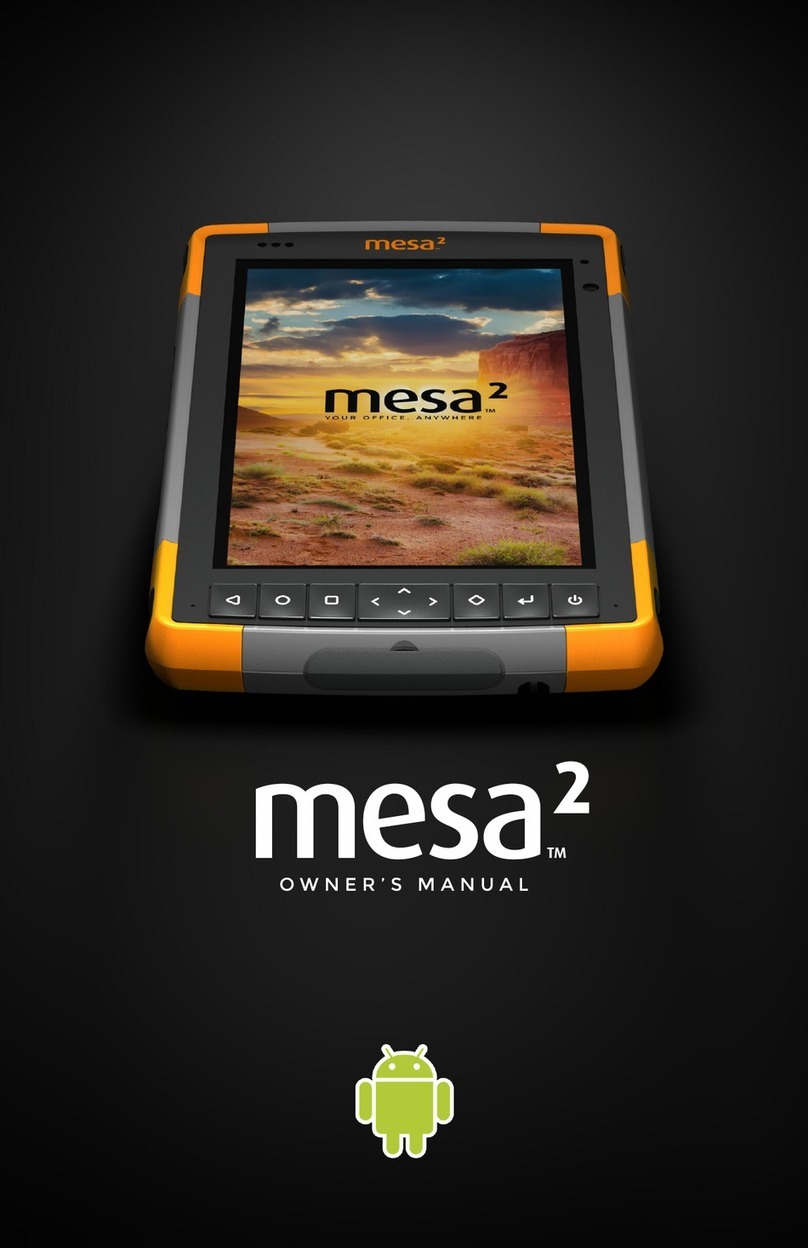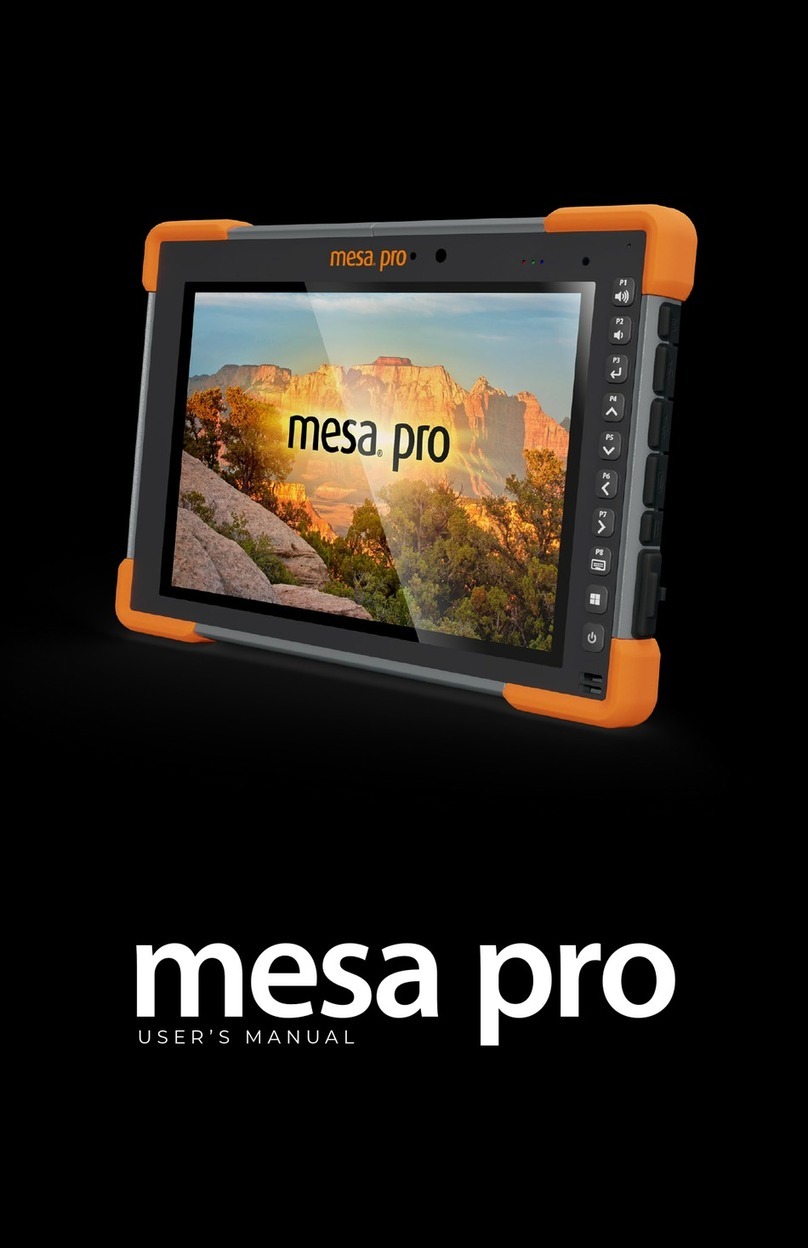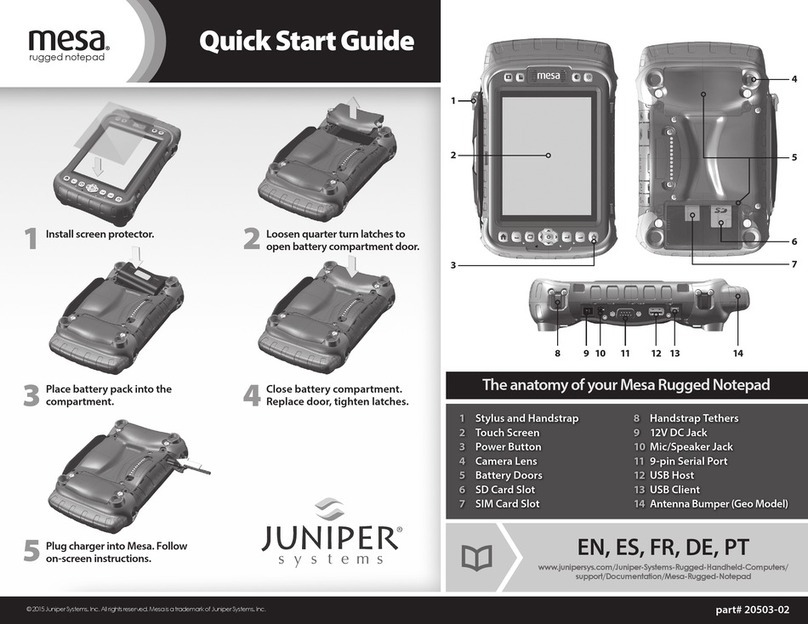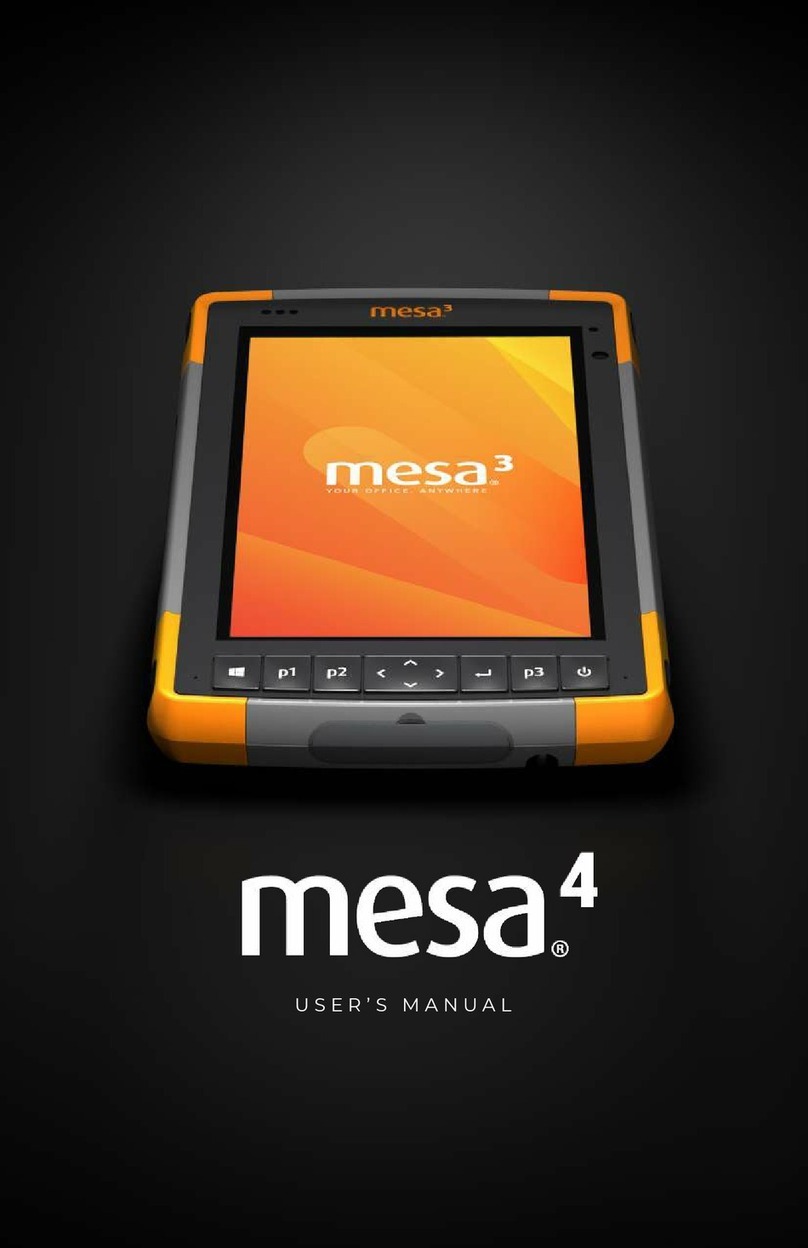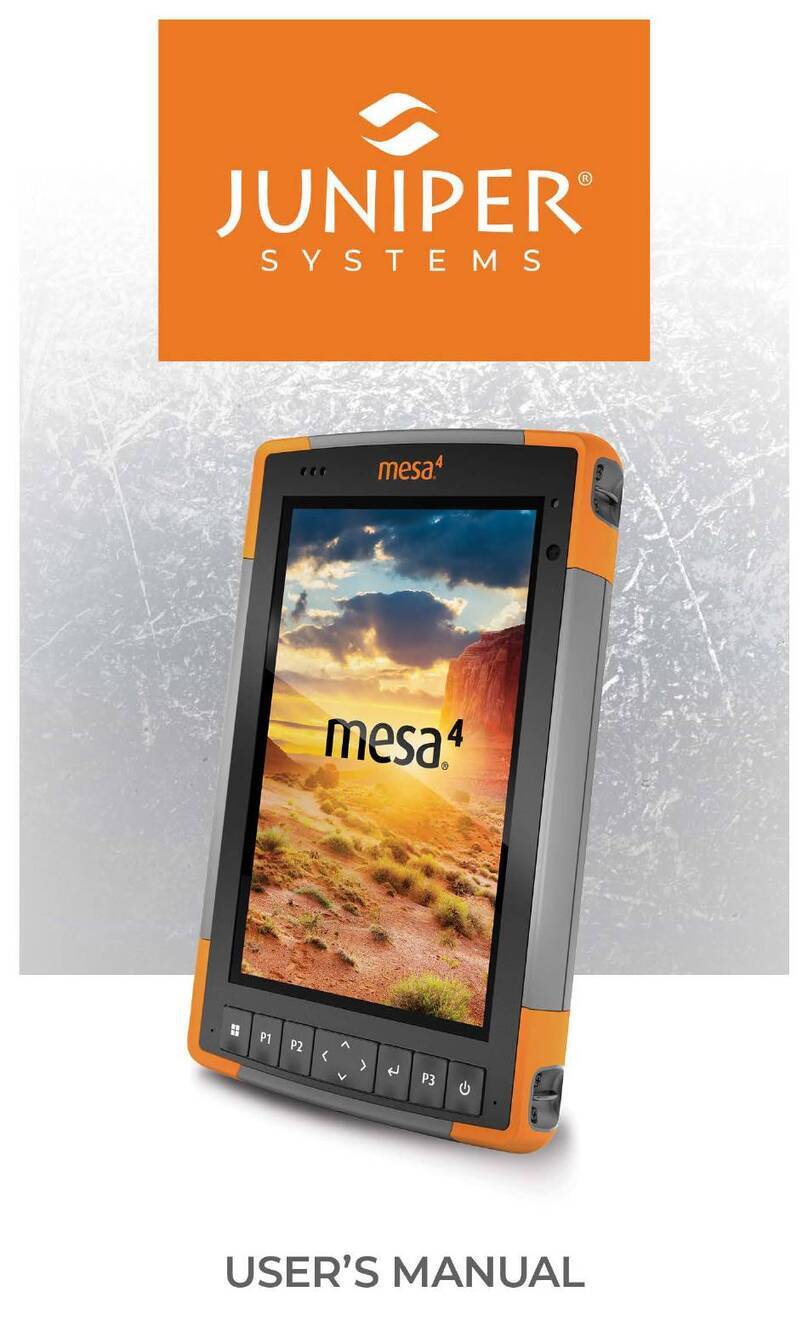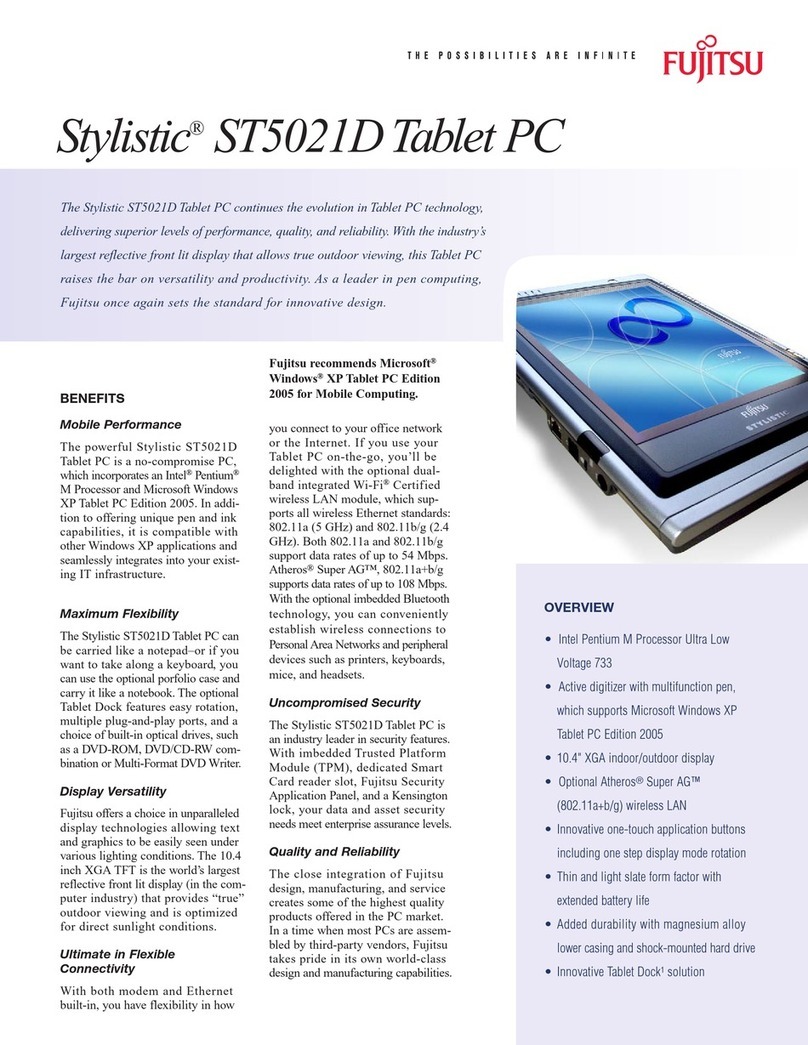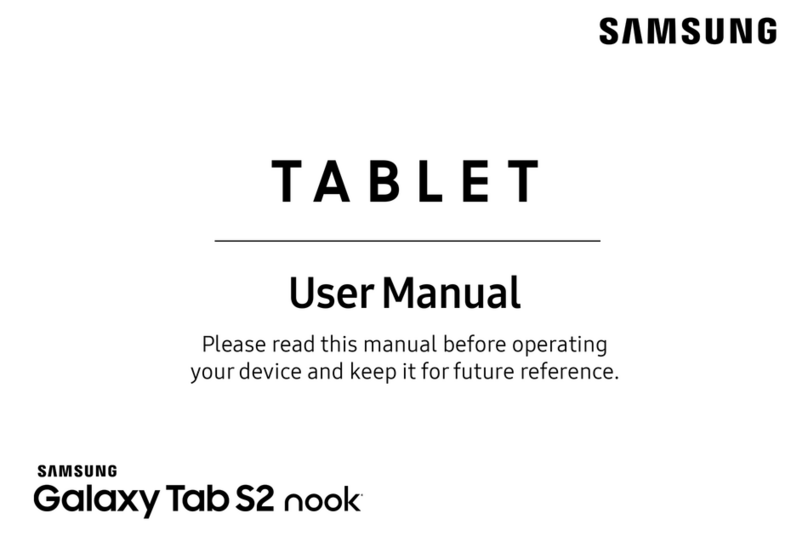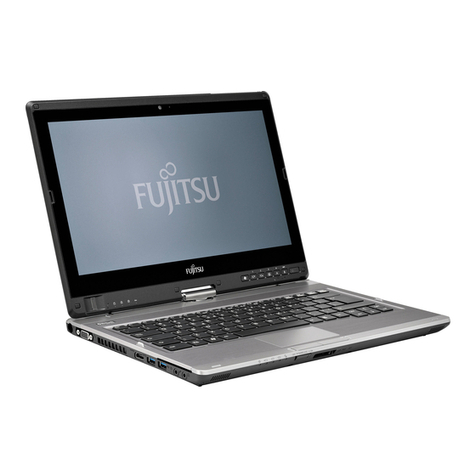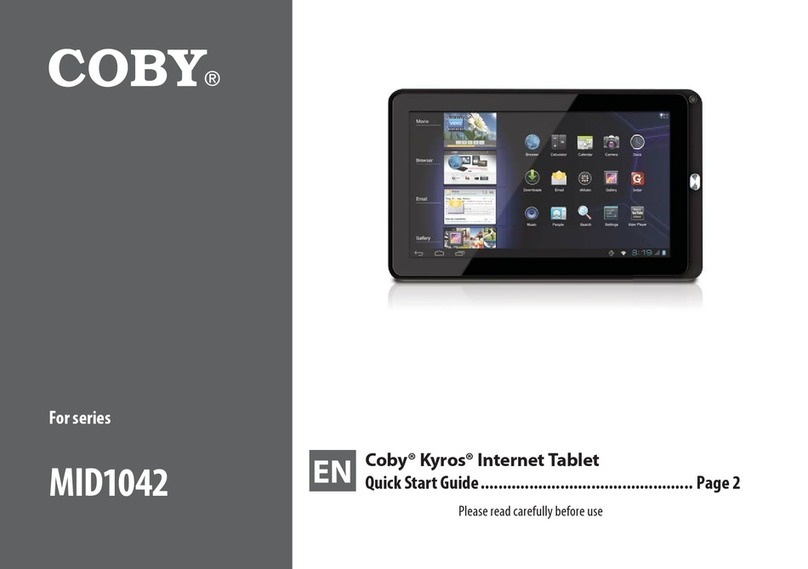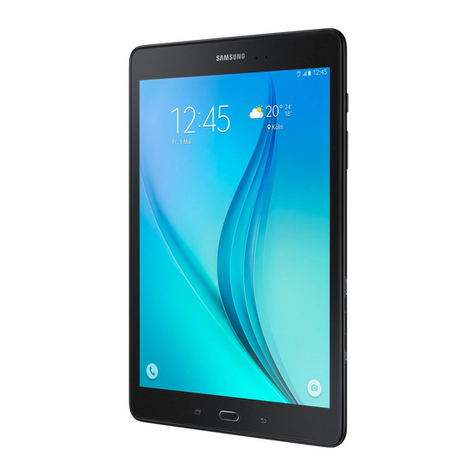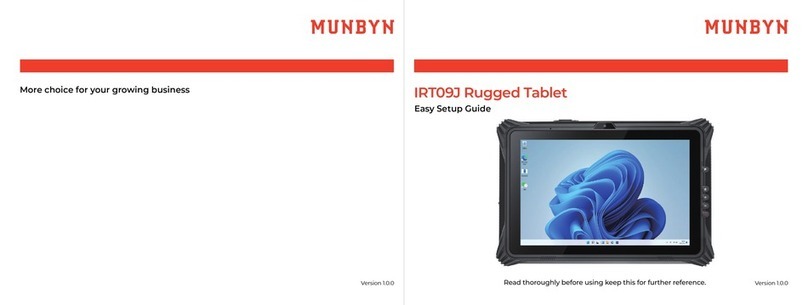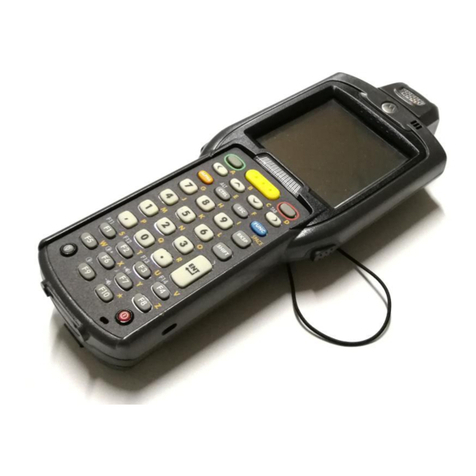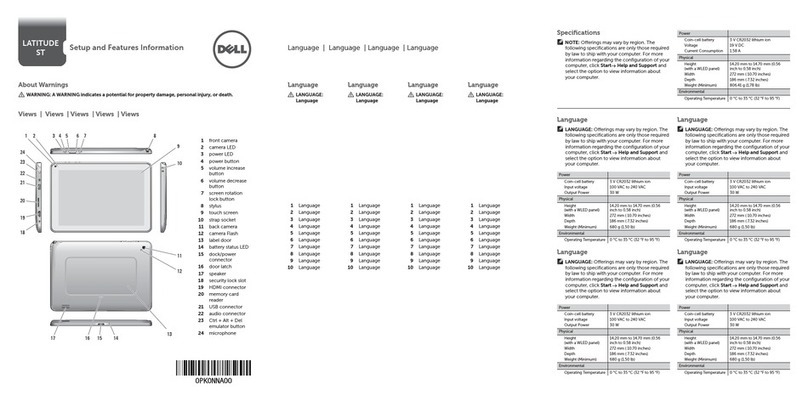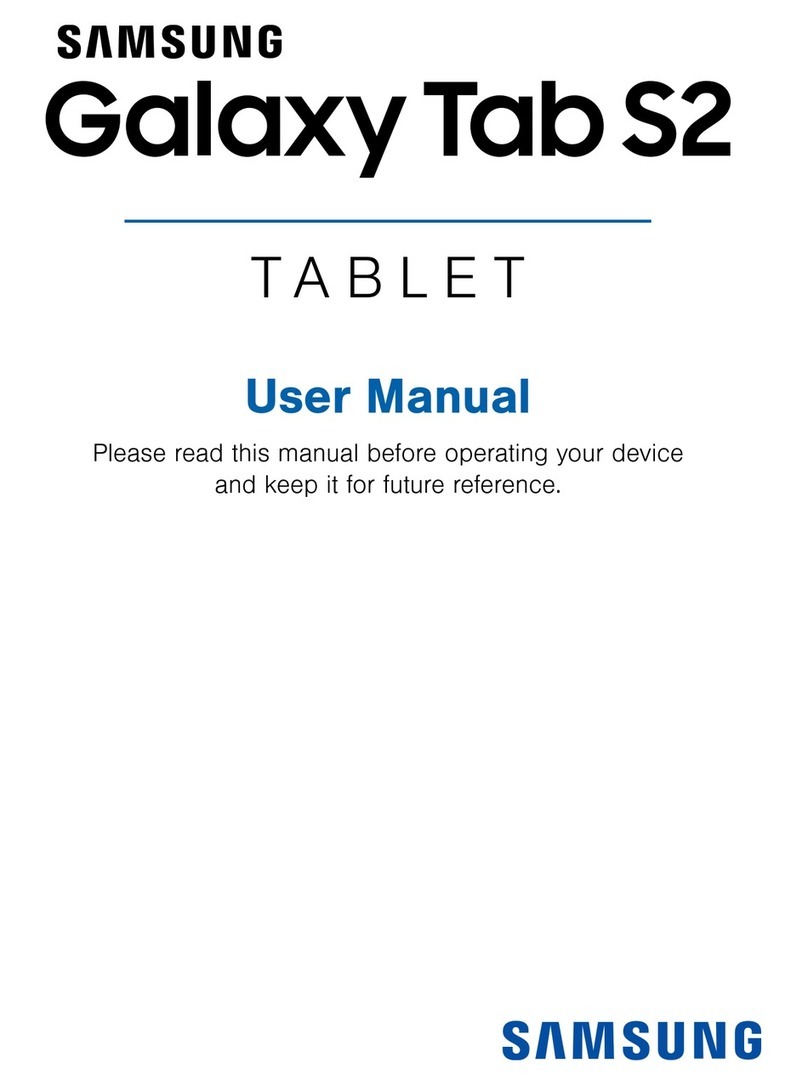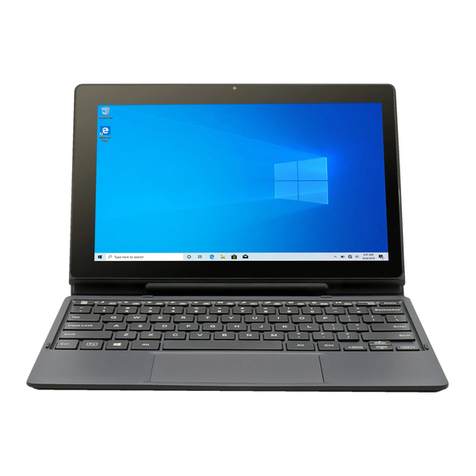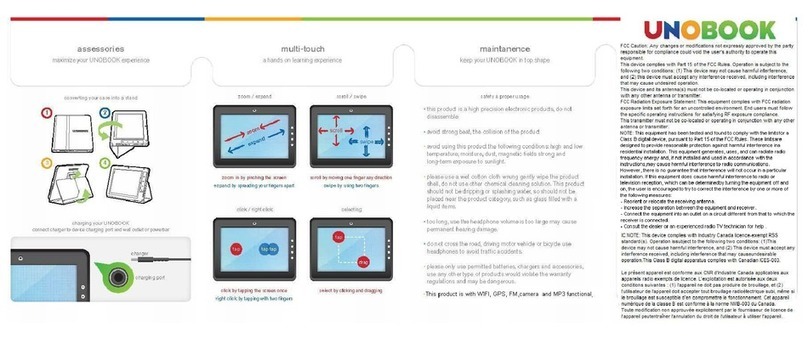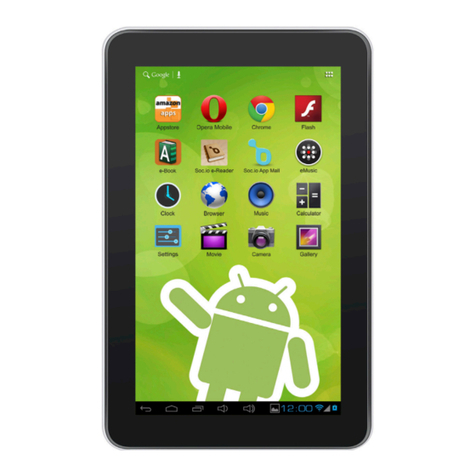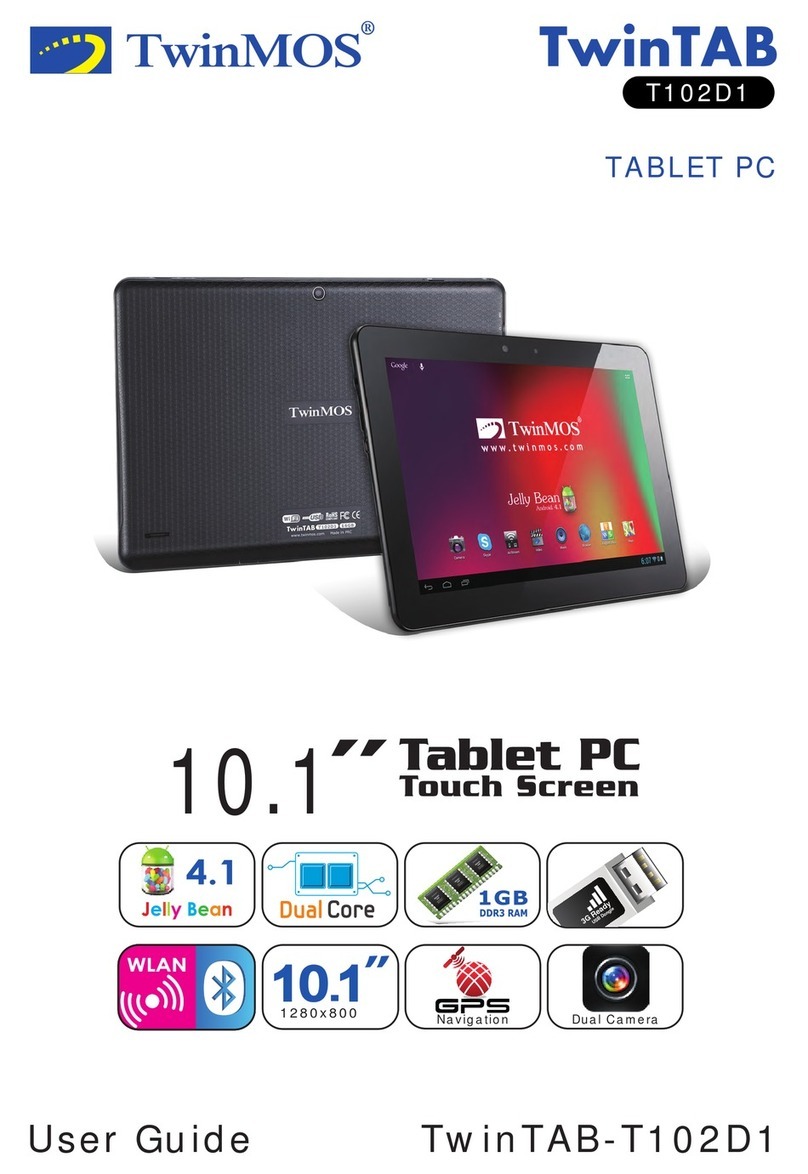
4Mesa 3 Rugged Tablet Owner’s Manual
Perform Initial Tasks
When you receive your Mesa 3, perform the tasks outlined in
this section before rst use.
Review Documentation
This owner’s manual and other documents like release notes
are available on our website at: https://junipersys.com/
support/mesa-3/documentation.View, download, and
print documents as desired, either on the Mesa 3 or another
computer with an internet connection. A PDF viewer is
included with your Mesa 3 apps.
Install and Charge the Battery Pack
The Mesa 3 comes with a rechargeable and removable
Li-Ion battery pack. Install and charge the battery pack as
follows:
1. The battery compartment is accessed from the back of
the tablet. Push the battery lock switch in, slide it to the
unlocked position, and remove the door.
CAUTION: The Mesa 3 is not sealed against water and
dust when the battery door is not installed.
2. If you are using a micro SD card for additional memory
or a micro SIM card with the Cellular Data Modem
(optional), you can install them now before you install
the battery pack or at another time. If you do this,
make sure you replace the exible card retainer before
installation of the battery. See Chapter 2, SD Cards or
Chapter 3, Install the SIM Card for details.
3. Follow the graphic on the battery label to insert the
battery pack properly.
TO ENSURE DOOR SEAL, INSERT SIDE (A) FIRST!
PARA VEDAR A PORTA, INSIRA O LADO (A) PRIMEIRO!
PARA SELLAR LA PUERTA, INSERTE PRIMERO LADO (A)
ERST SEITE (A) EINLEGEN – SICHERT TÜRDICHTUNG!
P/ VEDAR A PORTA, INSIRA O LADO (A) PRIMEIRO!
(A)
(A)
Hold the battery so that the black tab on the front edge
of the battery is up and facing the door latch (this tab
!
